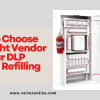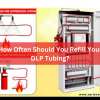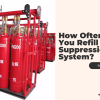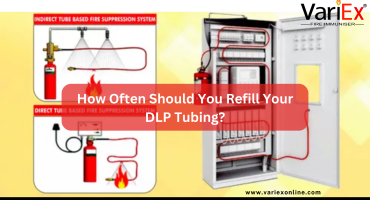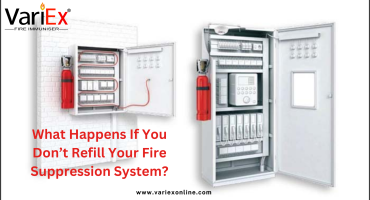![]()
Fire Immuniser
+91-7829629111
Email: info@variex.in
Varistor Technologies Pvt. Ltd.
Block-1, First Floor, Ardente Office One, Hoodi Circle, ITPL Main Road, Bengaluru, Karnataka 560048, IN
Fire Suppression Systems for Kitchen and Restaurant Safety
Fire Suppression Systems for Kitchen and Restaurant Safety
In the fast-paced environment of a kitchen or restaurant, safety is paramount. Among the numerous safety protocols, fire suppression systems play a critical role in protecting not just your staff and customers but also your valuable equipment and business investment. Given the high risk of fire due to heat, open flames, and cooking oils, having an appropriate fire suppression system is essential to comply with regulations and ensure safety. This blog will explore the importance of fire suppression systems in commercial kitchens, the types available, installation tips, regulations, and how they contribute to overall safety.
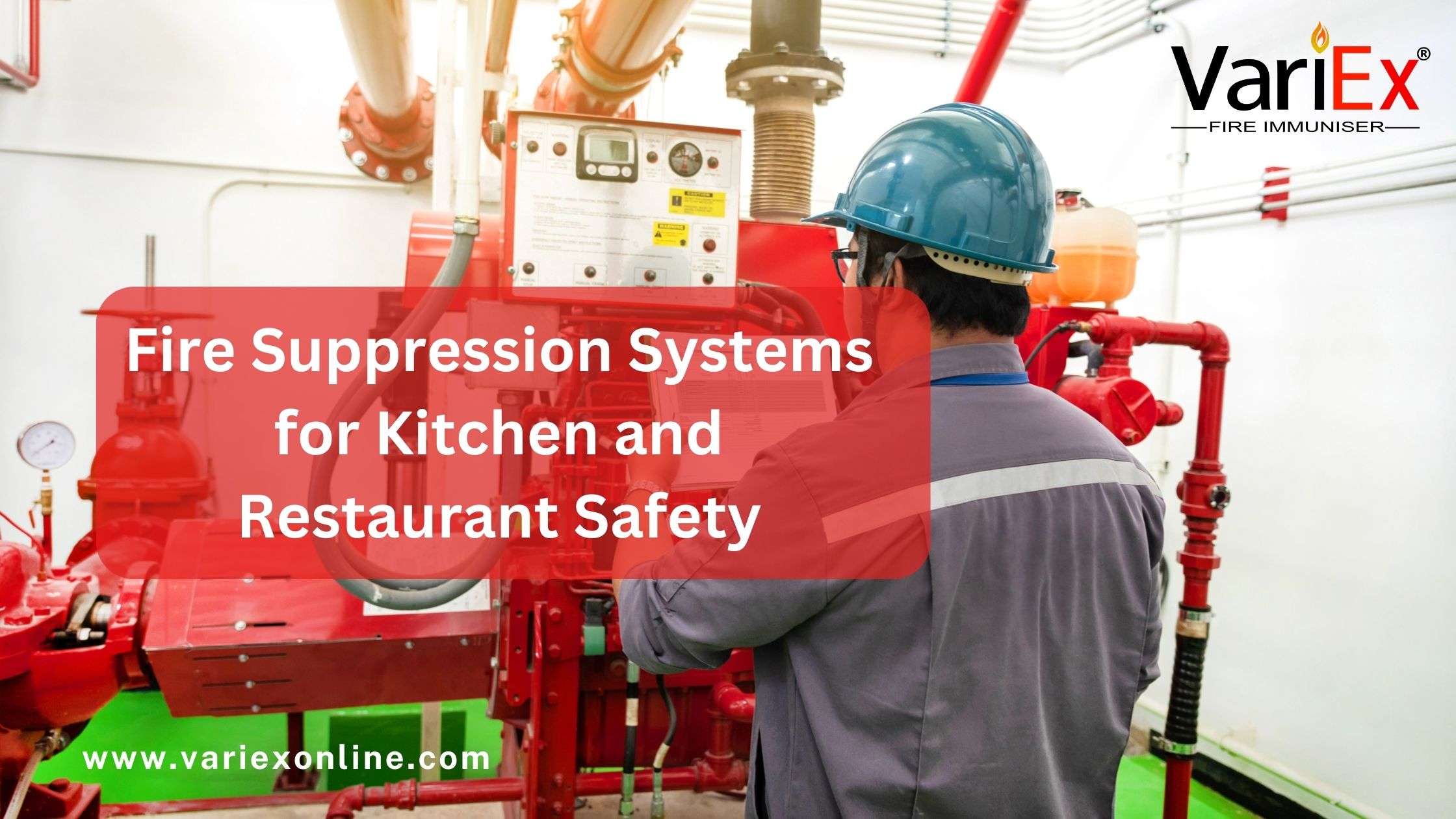
The Importance of Fire Suppression Systems in Commercial Kitchens
Commercial kitchens are a high-risk environment for fires due to the constant use of cooking equipment like fryers, grills, and ovens. In fact, according to the National Fire Protection Association (NFPA), nearly 61% of restaurant fires are caused by cooking equipment. These fires can be catastrophic, leading to injury, loss of life, destruction of property, and long-term financial loss for businesses.
A well-designed fire suppression system is the first line of defense in these situations. It automatically detects and suppresses fires before they escalate, minimizing damage and reducing the risk of injury.
Key Benefits of Fire Suppression Systems in Commercial Kitchens:
- Immediate Response: Detects and extinguishes fires before they spread.
- Minimal Downtime: Quickly suppresses fires, allowing businesses to resume operations with minimal interruption.
- Compliance: Ensures that your kitchen meets local fire safety regulations and NFPA standards.
- Employee and Customer Safety: Reduces the risk of injury to staff and patrons.
Types of Fire Suppression Systems for Kitchens
There are various fire suppression systems designed specifically for the commercial kitchen environment. Each system has its own unique benefits depending on the type of equipment and layout of the kitchen. Below is a breakdown of the most commonly used fire suppression systems in kitchens:
1. Wet Chemical Fire Suppression Systems
- Best For: Commercial kitchens, especially those with fryers and high grease use.
- How It Works: Wet chemical systems release a chemical agent that reacts with cooking oils and grease, creating a soapy foam layer that cools the fire and prevents it from reigniting.
- Advantages: Specifically designed to suppress grease fires and is highly effective for restaurant environments.
2. Dry Chemical Fire Suppression Systems
- Best For: Small kitchens or those with less grease exposure.
- How It Works: A dry chemical powder is released, which interrupts the chemical reaction of the fire, extinguishing it quickly.
- Advantages: Cost-effective and ideal for smaller or less intense cooking environments.
3. CO2 Fire Suppression Systems
- Best For: Electrical fires or areas with expensive equipment like ovens or grills.
- How It Works: CO2 systems suppress the fire by reducing the oxygen available, effectively suffocating the fire.
- Advantages: Non-corrosive and leaves no residue, making it safe for expensive kitchen equipment.
4. Water Mist Systems
- Best For: Sensitive equipment or kitchens with multiple fire hazards.
- How It Works: Releases fine water mist particles that cool the fire and remove heat from the environment.
- Advantages: Safe for electrical components and reduces water damage compared to traditional sprinklers.
Comparison Table: Fire Suppression System Types
| Type | Best Use | Suppression Agent | Pros | Cons |
|---|---|---|---|---|
| Wet Chemical Systems | Grease-heavy kitchens | Potassium carbonate | Highly effective for grease fires | Requires regular maintenance |
| Dry Chemical Systems | Small kitchens | Sodium bicarbonate, Monoammonium phosphate | Affordable and versatile | May leave residue, which needs cleanup |
| CO2 Systems | Electrical and high-tech kitchens | Carbon Dioxide | Non-corrosive and leaves no residue | Dangerous in confined spaces |
| Water Mist Systems | Multi-hazard environments | Fine water mist | Reduces heat with minimal water damage | Not as effective on grease fires |
How to Install a Fire Suppression System in a Restaurant
The installation of a fire suppression system in a kitchen is a complex task that should be performed by professionals. Proper installation ensures that the system will work efficiently in case of a fire. Here are the key steps involved:
1. Consult with a Fire Suppression Specialist
The first step is to consult a certified fire suppression system installer. The expert will evaluate your kitchen layout, equipment, and potential fire hazards to recommend the best type of system.
2. Design the System
The design phase involves mapping out the areas where fire hazards are most likely to occur. For example, fryers, stoves, and ovens should be protected by nozzles that can release the fire-suppressing agent directly onto flames.
3. System Installation
After designing the system, the installer will place the necessary components, such as detection sensors, nozzles, and control panels. The system will be connected to your building’s alarm system and may include manual pull stations for added safety.
4. Testing and Inspection
Once installed, the fire suppression system must be tested to ensure that it meets NFPA standards and local fire safety codes. Regular inspections will also be required to ensure it remains operational.
Fire Suppression System Regulations for Commercial Kitchens
Understanding and complying with fire safety regulations is crucial for restaurant owners. Non-compliance can lead to hefty fines, loss of business licenses, or even closure. Below are the essential fire suppression regulations for commercial kitchens:
1. NFPA 96: Standard for Ventilation Control and Fire Protection
NFPA 96 outlines the fire safety requirements for the ventilation systems in commercial kitchens. This includes the installation of kitchen hoods and ductwork that help remove heat, smoke, and grease-laden vapors.
2. NFPA 17A: Standard for Wet Chemical Fire Extinguishing Systems
This standard governs the installation, maintenance, and inspection of wet chemical fire suppression systems in commercial kitchens.
3. Regular Inspections
Local fire codes usually require that commercial kitchens undergo regular inspections to ensure their fire suppression systems are working correctly. This often includes semi-annual inspections by a certified professional.
4. Employee Training
In addition to having a fire suppression system, it’s important that all kitchen staff are trained in fire safety, know how to activate the system manually, and understand evacuation procedures.
Maintenance of Fire Suppression Systems
Maintaining your fire suppression system is as important as the initial installation. Regular maintenance ensures the system will work in an emergency. Here's what to keep in mind:
1. Scheduled Inspections
The NFPA recommends that fire suppression systems in commercial kitchens undergo inspections every six months to ensure they’re functioning properly.
2. Cleaning and Recharging
After any system activation, the system needs to be cleaned, and the chemical agents may need to be recharged. This ensures it's ready to respond to future fires.
3. Replacing Worn Parts
Nozzles, detection sensors, and manual pull stations should be inspected regularly and replaced if they show signs of wear or damage.
Conclusion
A fire suppression system is an essential part of restaurant safety. From wet chemical systems designed to handle grease fires to CO2 systems for protecting expensive equipment, there’s a solution for every kitchen. Regular maintenance, proper installation, and compliance with NFPA regulations ensure your restaurant remains a safe environment for staff and patrons alike.
By investing in a high-quality fire suppression system, restaurant owners can protect their property, employees, and customers from the devastating effects of a fire. Always work with certified professionals for the design, installation, and maintenance of your fire suppression systems to ensure maximum safety and compliance with local regulations.
Frequently Asked Questions
Wet chemical fire suppression systems are the best option for commercial kitchens as they are specifically designed to handle grease fires.
Fire suppression systems in kitchens should be inspected every six months to ensure they are working correctly.
The system releases a fire-suppressing agent to extinguish the flames. After activation, the system will need to be cleaned and recharged.
Yes, fire suppression systems are required by law in most commercial kitchens to comply with local fire safety regulations.
No, fire suppression systems must be installed by certified professionals to ensure they meet regulatory standards and work correctly.
Final Say
At VariEx.in and VariexOnline.com, we specialize in supplying and installing top-quality fire fighting systems and equipment. From fire extinguishers to advanced suppression systems, we offer comprehensive solutions tailored to your needs. Our experienced team ensures precise installation and maintenance for optimal safety.
Trust VariEx for reliable fire protection. Contact us online or call 7829629111 to learn more.
We specialize in manufacturing, supplying, and distributing a comprehensive range of fire fighting equipment, including state-of-the-art fire extinguishers. Read our most searched blogs and find interesting information on topics such as how to use a fire extinguisher, how to calculate fire fighting water tank capacity, fire extinguisher refilling, obtaining a Fire NOC, understanding fire fighting systems, types of fire protection systems, the fire hydrant system, and the fire sprinkler system. These resources provide essential knowledge for ensuring safety and compliance with fire safety regulations. Additionally, you can explore guides on the maintenance of fire protection equipment, the latest advancements in fire safety technology, and best practices for fire risk assessment and management.
Our expertise extends to fire alarm systems, fire hydrant systems, and fire suppression systems, including fire sprinklers. Each product meets rigorous international standards for reliability and performance, ensuring effective fire safety products tailored to diverse applications and industries. Additionally, we are providing Fire Extinguisher Refilling and AMC services to ensure ongoing maintenance and operational readiness of fire safety equipment.
"WHAT YOU CAN READ NEXT"
 Read more +24 November 2023 in Fire Extinguisher
Read more +24 November 2023 in Fire ExtinguisherWhat types of fire extinguishers are available for different fire classes?
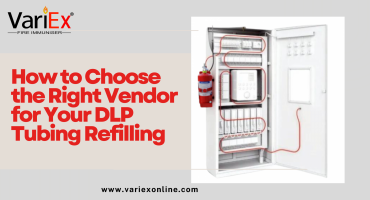 Read more +11 April 2025 in Fire Suppression
Read more +11 April 2025 in Fire Suppression

